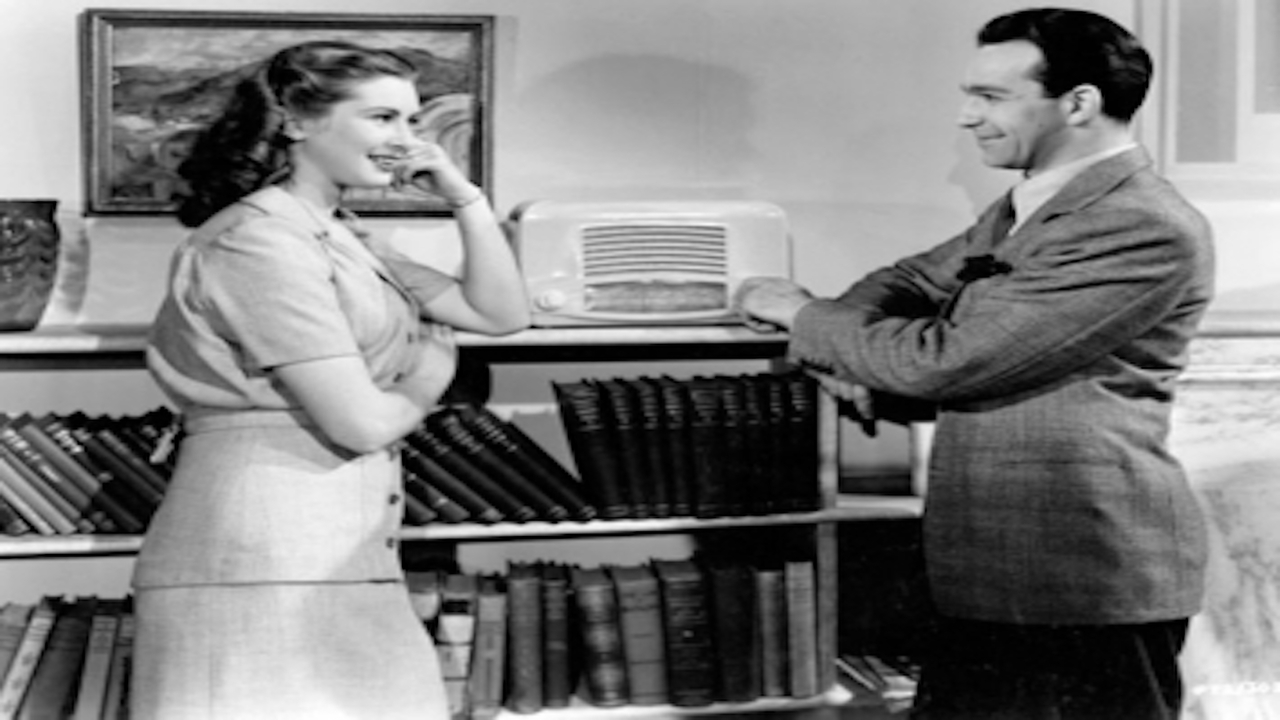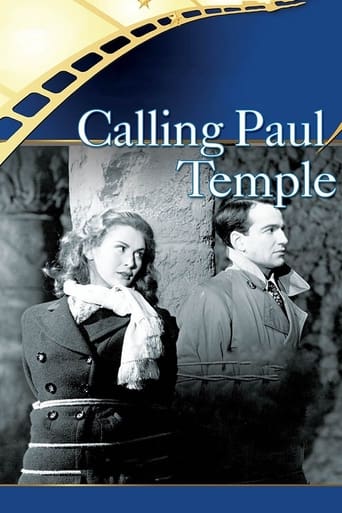

This is How Movies Should Be Made
... View Moreeverything you have heard about this movie is true.
... View MoreThe movie's not perfect, but it sticks the landing of its message. It was engaging - thrilling at times - and I personally thought it was a great time.
... View MoreThe thing I enjoyed most about the film is the fact that it doesn't shy away from being a super-sized-cliche;
... View MoreFirst of four B films adapted from very popular radio programmes of the 40s and 50s Highly enjoyable for fans of old fashioned mysteries. Nice location work in Canterbury though matte shots from cars involving rolling scenery date it. Leads both good including Sheridan who would move onto A films including the wonderful "Genervive"
... View MoreCALLING PAUL TEMPLE is the second of four feature films starring radio detective Paul Temple, who along with his sidekick Steve (a woman) investigates various murders and crimes at the behest of Scotland Yard. This follows on from the sub-standard debut feature SEND FOR PAUL TEMPLE and was followed by the rarely-seen PAUL TEMPLE'S TRIUMPH.The story is a straightforward one of murder and intrigue as Temple and Steve find themselves hot on the trail of a murderer by the name of Rex. Rex specialises in bumping people off at random, often when they're just about to reveal his identity; shades of THE 39 STEPS with the Mr. Memory assassination. Still, this is a well-paced and enjoyable little affair, with plenty of red herrings and suspense to recommend it.It's not a perfect film by any means. Just after the arresting opening, things slow down for an endless nightclub song routine which seems to go on for about twenty minutes. Afterwards the plotting is a little crammed due to this endless filler material. Still, John Bentley and Dinah Sheridan have plenty of chemistry as the crime-fighting duo, and fans will find this reasonably entertaining.
... View MoreThis is a moderately entertaining, if rather insipid, film based on the BBC radio series written by Francis Durbridge, with Paul Temple, the writer of detective novels, acting as a detective himself. Here he is played by John Bentley, the first of his three films as Paul Temple. He is a very personable and adequate actor for the role. His wife 'Steve Temple' is played in lively fashion by Dinah Sheridan. She looks so eerily like the contemporary British actress Rosamund Pike that I kept imagining I was watching Pike in the role. A true mystery would run something like this: could they possibly be related? Both were born in London. Oh well, probably not, but it is just uncanny, that's all: a case for Paul Temple. And as all writers named Temple know, solving mysteries can be a lot of fun. The credited continuity girl for this film was June Faithful, although it does not appear in her list of credits on IMDb. I knew her much later in her career, and have absolutely no idea whether she is alive or not, for that is not recorded on IMDb either. This was probably her first continuity job. The cinematographer for the film was Geoffrey Faithful (and in his case, it does appear on his lengthy list of credits on IMDb; he died 1979, aged 86), who shot VILLAGE OF THE DAMNED (1960), MURDER SHE SAID (1961), and countless other films between 1913 and 1971, when he retired. He was probably June's father, and may have got her into the job on this first picture. This film is notable for containing much excellent location cinematography of the town of Canterbury as it was in 1947, with streets nearly empty of traffic, and before the town was largely ruined by tourism, chain stores, and rampant commerce. Much of the action is set there. A lot of the cinematography is atmospheric, commencing with the opening sequence inside the corridor of a moving train at night. If only the story and the direction had been better, this film could be something of a classic, but alas, it is not. A series of murders of women are taking place, and various sinister characters are 'set up' for us as either the real culprit or as red herrings, one of them played by the remarkable Burmese-Jewish actor Abraham Sofaer, who never failed in many a film to deliver an impeccably chilling rendition of a potential villain, aided by his weird looks. Another possible villain of the piece is ominously played by Hugh Pryse, who does a really good job of it indeed. Pryse died at the age of only 44 in 1955, only seven years after this film. He should have gone on to enjoy a distinguished career as an older character actor, for which he was eminently suited. Who is really killing all these women? They all turn out to be patients of Abraham Sofaer. Well, you can imagine the rest, but I shall not tell whodunit because that would be telling whodunit.
... View MoreSecond film in the brief Paul Temple Film series has Temple and his new wife living in flat in London. The pair gets mixed up in a series of blackmail murders that are being committed by fiend that signs himself Rex.Not quite up to the first film, the plot is even more confused and confusing, though it moves along at a good clip with a couple of nice action set pieces sprinkled through out which helps to get through its over length. I liked the film but at the same time thought it wasn't up to the first one. I kind of understand why the films in the series were few in number. Mystery fans may want to take a look.6 out of 10
... View More